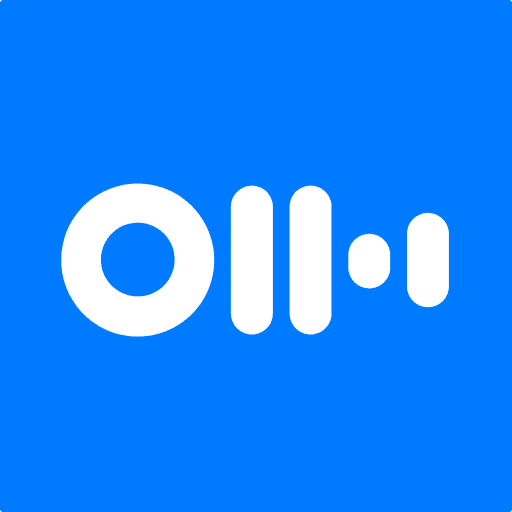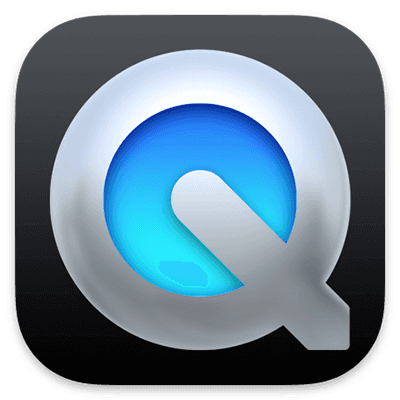Catharsis - Cooking as a path to mindfulness
Cooking isn’t just about preparing meals—it’s a meditative process that can reduce stress, spark joy, and bring people together. With these insights in mind, Catharsis, an app designed to combine culinary therapy with mindfulness, was born.
Part 1: The Challenge
1.1 Background
I learnt cooking from my Aai (mum). I’ve grown up surrounded by women who cooked not just out of passion, but as part of their daily duty of managing a home—and they did it with grace and consistency. But amidst the whirlwind of chores, children's homework, packing their husband's tiffin, and remembering their in-laws’ medicines, something quietly slipped away. Their own well-being. Their mental health.
Project Catharsis was born from that gap—from the need to give back to these women. To offer a small yet meaningful opportunity for housewives to reconnect with themselves. To create space for healing—without needing them to carve out more time from their already packed days.
Despite increasing awareness around mindfulness, most digital solutions fail to embed it into everyday routines. Cooking—an activity homemakers spend significant time on—remains treated as a task, not a therapeutic experience.
The challenge was to design a mobile experience that gently weaves mindfulness into cooking, turning a daily responsibility into a moment of emotional care and mental well-being.
1.3 Scope
Primary Users: Homemakers above 35+ who experience mental stress but lack structured self-care practices.
Core Features:
Guided mindful cooking sessions
Emotion-based recipe recommendations
Progress tracking for mindful practices
Audio-guided breathing and sensory cues
End Goal: Encourage mental well-being through an accessible and enjoyable daily routine.
1.5 Tools Used
Data synthesis

Qaultrics

Miro

Otter.ai

MS Word
Design & Prototype :

Affinity Designer

Marvel

Figma

QuickTime Player
Part 2: The Process
01 Empathise Goals
Understand homemakers’ emotional state during cooking and their perception of it as a chore.
Identify sensory, mental, and behavioral patterns through surveys and interviews.
Capture emotional triggers, routines, and overlooked needs during solo cooking sessions.
I know I need a break, but I don’t have time for one. I wish there was something that could help me without adding another task to my day." — Research Participant, Homemaker (Age 42)
01 Empathise Synthesis
Homemakers associate cooking with responsibility, not emotional release, often feeling drained rather than refreshed.
59.6% of surveyed users reported not feeling relaxed after cooking—despite using digital platforms like YouTube or Spotify.
User interviews revealed that many engage in background noise (TV/music) to avoid emotional discomfort while cooking alone.
02 Define Goals
Narrow down core user problems using affinity mapping and pain point clustering.
Develop insight statements and Point of View to reframe the problem empathetically.
Establish emotional outcomes the solution should address (e.g., relaxation, validation, expression).
Define
In-Depth Research Backed by 52 Surveys, 10 Interviews & 7 Core Insights
I used this research to truly step into the shoes of homemakers—understanding their emotional world and letting their voices guide every step of the design.
Survey (Quantitative research)
Conducted a Qualtrics survey with 52 respondents to understand home cooking behaviours, digital usage, and emotional experiences, revealing that most participants did not feel relaxed after cooking.
User Interviews (Qualitative research)
Conducted semi-structured interviews (20-30 mins) with six selected participants, categorised by cooking experience (0-15 years & 15+ years) to understand pain points, needs, and goals.
Participant Recruitment & Ethics
Used a User Recruitment Advertisement reflecting the product’s visual identity, ensuring participants received an information sheet and consent form before interviews.
PrIMARY PERSONA
The Busy Home Chef: Simplifying Meals and Life
This persona represents a busy parent or homemaker who seeks convenient solutions for meal planning, cooking, and managing family needs, valuing both practicality and emotional support.

Jenny
Goal
Wants to maintain mental stability without taking extra time out of her routine.
Desires a platform where she can share her skills and feel valued.
Needs a service that simplifies tasks like grocery shopping to reduce stress.
Frustrations
Feels overburdened by daily household responsibilities with no time for herself.
Lacks emotional support, making it difficult to share her struggles.
Struggles to find joy in routine household tasks.
Define
Point Of View Statements
This Point of View statement emerged from the key opportunities identified in Jenny’s journey—moments where emotional needs were consistently unmet. It reframes these insights into a clear design lens, helping define not just what the user needs, but why it matters. This became the foundation for crafting meaningful user stories that put emotional well-being at the heart of everyday cooking.
02 Define Synthesis
Affinity mapping revealed a strong emotional disconnect between users and their cooking routines.
Most participants wanted better emotional and sensory engagement during cooking but lacked awareness of mindful practices.
Personas and empathy maps showed common pain points: exhaustion, mental fatigue, and suppressed emotional needs.
03 Ideation Goals
Brainstorm solutions that embed mindfulness into everyday cooking tasks.
Translate emotional insights into functional, accessible feature ideas.
Explore low-effort interventions that offer mental relief without adding new tasks.
IDEATION
How Might We? Questions and Answers
Seeing how homemakers often suppress their emotions while caring for others, I framed my POV: A homemaker needs space to process her feelings during her daily routine, as she rarely gets time for herself. This led to the question—How might we transform cooking into a mindful, healing moment that supports her emotional wellbeing?
03 Ideation Synthesis
HMW questions helped frame the opportunity to turn cooking into a mindful act without adding extra time.
Rapid idea generation sessions surfaced features like ambient soundscapes, reflection prompts, and emotional journaling.
Competitor analysis showed a gap in emotional or therapeutic cooking apps, validating Catharsis' unique direction.
04 Prototype Goals
Build low- to mid-fidelity prototypes to validate flow and emotional intent.
Ensure the interface feels calm, non-intrusive, and intuitive to homemakers.
Test emotional tone and usability of features like reflection prompts, voice guides, and mood-based content.
Prototype
Logo formation
The Catharsis logo was developed by visualising the core action of the app—mindful stirring—as a metaphor for emotional release and inner balance. Starting with hand-drawn sketches that explored the top view of a pot and the motion of stirring, the concept evolved into a simplified swirl symbol, representing the syncing of body and mind. The final logo refines this idea into a clean, circular form built around the letter "C", capturing the essence of calm, rhythm, and emotional flow through cooking.

Prototype
High-Fidelity Prototype
feature 01 : Image to text recipes
I keep losing my old recipes, and when I find them, I struggle to read my own handwriting. I wish there was a way to just scan them and have them read aloud while I cook
-Participant 7
Feature 02: Podcasts, music, auidobooks
In a survey of 52 participants, 59.6% reported that cooking does not leave them feeling relaxed, indicating that for many, cooking is perceived as a draining task rather than a rejuvenating activity.
-Participant 7
Feature 03: Share recipes with voicenotes
"I don't really trust online recipes… Somehow, the food never turns out like the homely dishes I grew up eating. I wish there was a way to get guidance from someone who understands that feeling."
-Participant 8 | 27 year old woman
"You know, I have been cooking for years, and sometimes I wonder if my skills are even useful anymore. But if I could help someone like you make homely food, it would make me feel valued and connected."
-Participant 3 | 52 year old homemaker
Interactive Chat Support:
Users can ask questions about ingredient substitutions directly within the app, making the cooking experience more flexible. (Monetisation Opportunity: Premium users can get quick responses from expert chefs.)
Allergen & Prep Time Indicators:
Clear visual cues help users quickly assess if a recipe fits their needs. (Monetisation Opportunity: Offer a premium version where users can filter recipes based on allergens and dietary preferences.)

Real-Time Expert Guidance:
Users can chat with recipe creators or experienced home cooks to ensure their dish turns out as expected. (Monetisation Opportunity: Paid consultation or subscription-based mentor access.)
Audio Notes for Recipes:
Instead of reading, users can listen to step-by-step guidance, making it easier to follow while cooking.
Feature 04: Customised meal plan for your family
Every single day, I ask myself the same question—what's for dinner? By the time I decide, I’m already exhausted. I just wish something could take this stress away!
04 Prototype Synthesis
Early paper prototypes tested features like mood-based music and recipe organisation to simplify UX.
Ensure the interface feels calm, non-intrusive, and intuitive to homemakers.
Test emotional tone and usability of features like reflection prompts, voice guides, and mood-based content.
05 Test Goals
Evaluate if users felt emotionally acknowledged and supported by the product.
Gather feedback on clarity, usefulness, and tone of mindfulness-based features.
Refine onboarding and storytelling to ensure the purpose of Catharsis is clearly communicated.
ITeration 01
Breaking Language Barriers for a More Accessible Cooking Experience!
In this iteration, the app was localized into five additional languages. During testing, I observed that 6 out of 10 users struggled with language barriers. Once the moderator translated the content for them, users were able to continue with the flow without further issues. This change was prioritized due to its significant impact on accessibility and user experience.
Korean
Arabic
Marathi
Chinese
Bengali
ITeration 02
Connect, Restock, and Cook with Ease—Your Kitchen, Your Support
In this iteration, two key features were added. First, Catharsis Premium was introduced, allowing users to connect directly with mental health professionals for support during their cooking journey. Second, a grocery restocking featurewas implemented, where users can simply mention what they are running out of while cooking, and the app will automatically add those items to their grocery list. These additions aim to enhance the overall user experience by offering emotional support and convenience.

Instant Emotional Support
Catharsis Premium allows users to connect directly with mental health professionals during their cooking experience, offering emotional support and guidance, ensuring they feel heard and supported while preparing meals.
Effortless Grocery Management
The app’s grocery restocking feature enables users to easily add items to their shopping list by simply mentioning what they’re running low on while cooking, making meal prep and grocery shopping more convenient and efficient.
05 Test Synthesis
Usability tests confirmed that users understood the emotional purpose of Catharsis, not just its functionality.
Participants requested more upfront education on mindful cooking, leading to homepage changes.
Users appreciated the consistent visual language and felt emotionally supported while interacting with the prototype.
While Catharsis presents a thoughtful step toward mindful cooking, the project faced certain limitations—ranging from a lack of live user testing to time-bound feature exploration. These constraints opened up avenues for future development, like integrating wearable-based biofeedback or expanding accessibility features. Nonetheless, the foundation built here offers a solid, human-centered direction for what's to come.

































